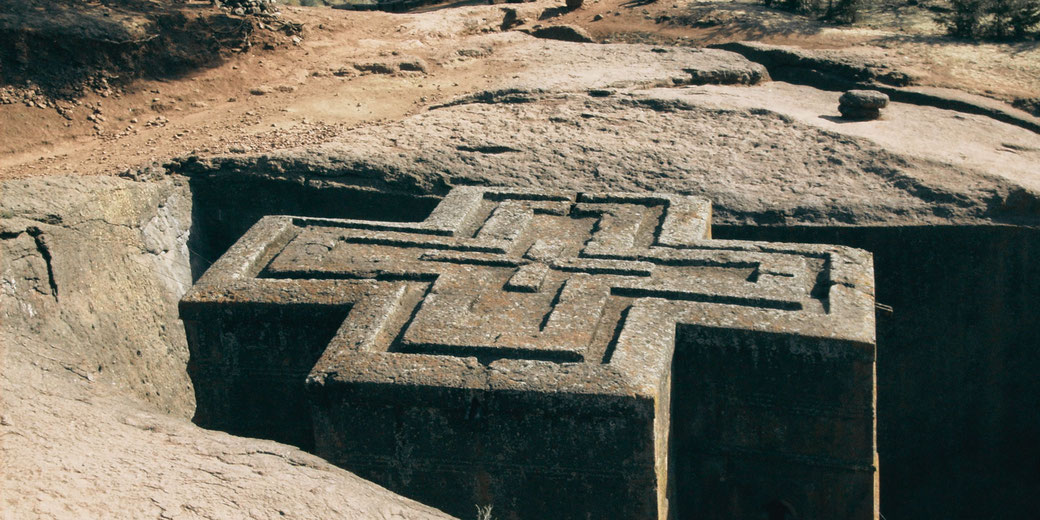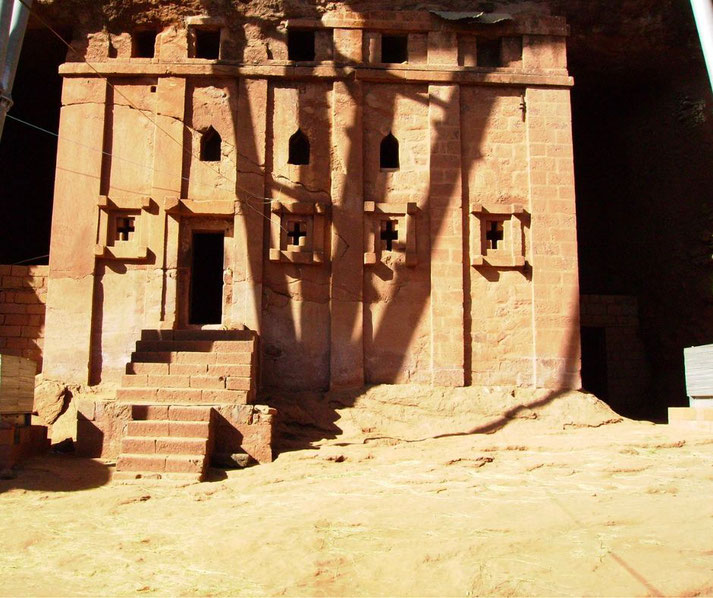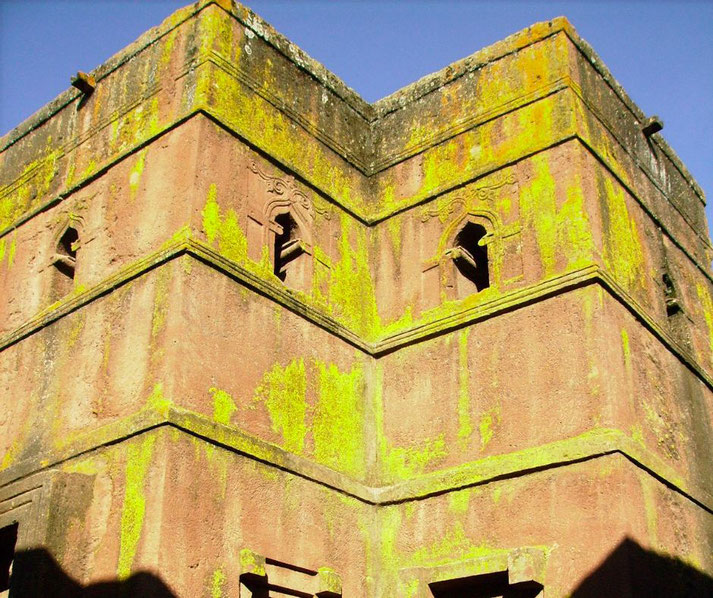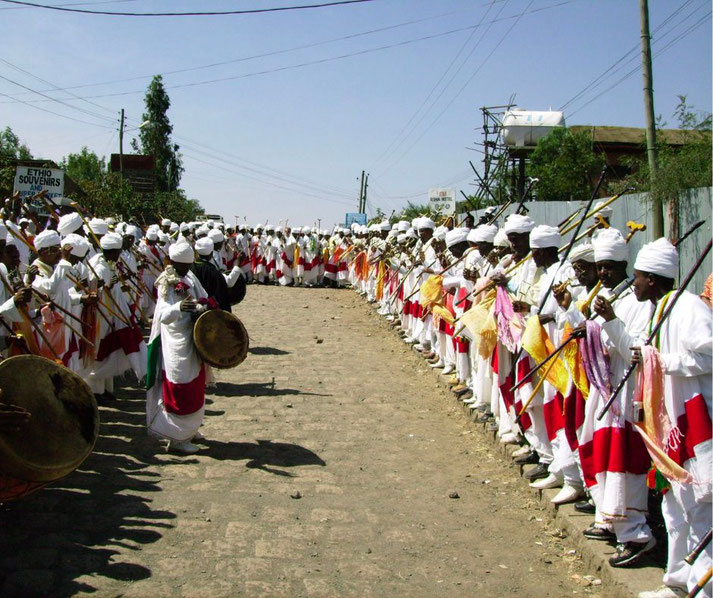The incredible underground churches of Lalibela

Lalibela, a small town nestled in the northern highlands of Ethiopia, is renowned for its exceptional series of rock-hewn churches, a remarkable feat of engineering and architecture from the 12th and 13th centuries.
This UNESCO World Heritage site, often referred to as the "New Jerusalem," reflects the historical and religious significance deeply ingrained in Ethiopian culture.
Why were the Lalibela churches built?
Lalibela's history is deeply intertwined with the rise of the Zagwe dynasty, which came to power in Ethiopia around the early 12th century.
The Zagwe period, extending from approximately 1137 to 1270, is crucial in Ethiopian history, marked by significant religious and artistic developments.
King Gebre Mesqel Lalibela, who reigned in the late 12th and early 13th centuries, is a central figure in this era.
The construction of the rock-hewn churches in Lalibela is traditionally attributed to King Lalibela himself.
His reign, likely spanning from around 1181 to 1221, was a period of religious fervor and artistic creativity.
The motivation behind these monumental endeavors is rooted in the historical events of the time, particularly the capture of Jerusalem by Muslim forces in 1187.
This event significantly impacted the Christian world, including the Ethiopian Orthodox Church, which had long-standing religious ties to Jerusalem.
King Lalibela's vision to build a New Jerusalem in Ethiopia was an ambitious project aimed at creating a sacred space that mirrored the holy city.
Each church was designed to represent different aspects of Jerusalem and the life of Jesus.
The construction process, achieved by chiseling directly into the volcanic rock, was an engineering feat of its time, and it's believed that it was completed with the help of angels, according to local lore.
During this period, Ethiopia was a crossroads for diverse cultures, with influences from neighboring regions and as far away as the Middle East and Europe.
These influences are evident in the architectural styles and motifs found in the Lalibela churches.
The Zagwe dynasty, and particularly King Lalibela, played a crucial role in fostering a unique Ethiopian identity that synthesized these various influences.

The remarkable architectural construction techniques
Carved directly into the bedrock, these churches are a marvel in terms of both their structural ingenuity and aesthetic beauty.
The churches, dating back to the 12th and 13th centuries, are grouped into two main clusters with a solitary church set apart, symbolically representing Jerusalem.
Each church has its unique architectural style, yet they share common features that reflect a blend of local and international influences.
The churches are excavated from a single piece of rock, requiring meticulous planning and execution.
This method of construction creates a unified harmony between the buildings and the surrounding landscape.
The exterior facades are striking, featuring different shapes such as crosses and geometric patterns, along with windows and doors that are carefully carved to allow light into the interiors.
The interior of each church is equally impressive, with some featuring intricate frescoes, reliefs, and carvings depicting religious scenes and figures.
The interior spaces vary; some have high ceilings and spacious halls, while others are more intimate.
The layout often includes a holy of holies, a nave, and sometimes a transept, mirroring the traditional structure of a church.
An outstanding example is the Church of Saint George, renowned for its cross-shaped design and precision in execution.
This church is arguably the most sophisticated of the Lalibela structures, demonstrating a high level of craftsmanship and architectural planning.
The trenches and ceremonial passageways surrounding the churches further add to their grandeur and complexity.

The powerful role the churches play in religious rites
Each church in Lalibela is dedicated to a specific saint or religious event, reflecting the deep devotion and theological insights of the Ethiopian Orthodox Church.
The layout of the churches, mirroring the holy city of Jerusalem, was intended to create a sacred space that would serve as a site of pilgrimage and worship, particularly for those unable to journey to the actual Jerusalem.
This aspect has made Lalibela a revered site for Ethiopian Christians.
The Church of Saint George, for instance, is dedicated to the patron saint of Ethiopia, showcasing the integration of religious devotion into the very fabric of these structures.
The churches are the site of numerous religious ceremonies and festivals, most notably the Ethiopian Orthodox celebration of Timkat (Epiphany), which draws thousands of pilgrims and spectators.
During these festivals, the town transforms into a vibrant hub of activity, with colorful processions, traditional music, and dance, showcasing the rich cultural heritage of the region.

Moreover, the churches of Lalibela have served as a repository of religious art and manuscripts.
The intricate carvings and frescoes within some of the churches depict scenes from the Bible and the lives of saints, serving as both religious symbols and educational tools.
These artistic elements play a crucial role in the liturgical life of the churches, enhancing the spiritual experience of worshippers.
The ongoing use of the Lalibela churches for regular worship services is a testament to their enduring religious importance.
They continue to be a place of pilgrimage, not only for Ethiopian Orthodox Christians but also for people from around the world seeking spiritual insight or simply to experience the solemnity and devotion that these churches inspire.
What do you need help with?
Download ready-to-use digital learning resources
Copyright © History Skills 2014-2024.
Contact via email
With the exception of links to external sites, some historical sources and extracts from specific publications, all content on this website is copyrighted by History Skills. This content may not be copied, republished or redistributed without written permission from the website creator. Please use the Contact page to obtain relevant permission.





